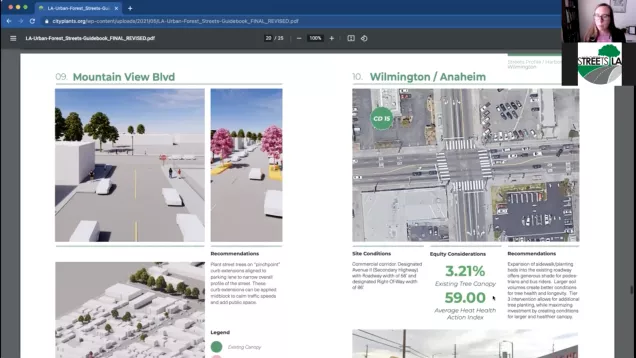
Our visiting tree equity scholar, Vivek Shandas, and his team recently published a tree equity report for Los Angeles. The report establishes a tier system for rating the ease with which trees could be planted on a given street. At this lunch and learn session, we discussed the report's tier system - Tiers 1, 2 and 3. Tier 1 means a site that’s immediately available for planting, with enough parkway width and empty tree wells. Tier 2 means some concrete cuts would be needed, and Tier 3 includes those places where significant redesign, acquisition of additional park space, increased planting on private property or other interventions would need to occur for adequate space to allow planting of trees to create the shade that’s needed.
It’s easy to jump to a conclusion that the Tier 1 areas should be planted immediately. However, the easiest places to plant trees might not be the best for creating tree equity and the shade required. Conversations with stakeholders about which trade-offs might be required may need to occur to reach the Mayor's tree canopy goals for underserved communities. A chart in the report maps effort vs. greening potential, a start for the kind of trade-off conversations that will be needed to complete an accurate cost-benefit analysis.
The report also provides 10 case studies, which outline not only the street and parkway width on selected streets, but also challenges like utilities, neighbor opposition, etc. Some streets, even fully planted, would not provide the shade needed for parents walking their kids to school, for example, because of the space constraints. These factors must all be considered when making the best tree planting decisions for the community and to achieve the City’s tree canopy equity goals.
You can watch to the full Lunch and Learn session here or on DPW’s YouTube page and read the full Tree Equity report on the CityPlants website.